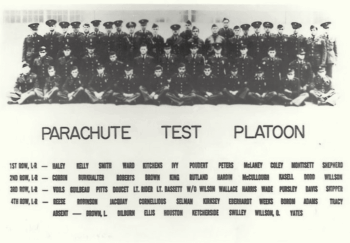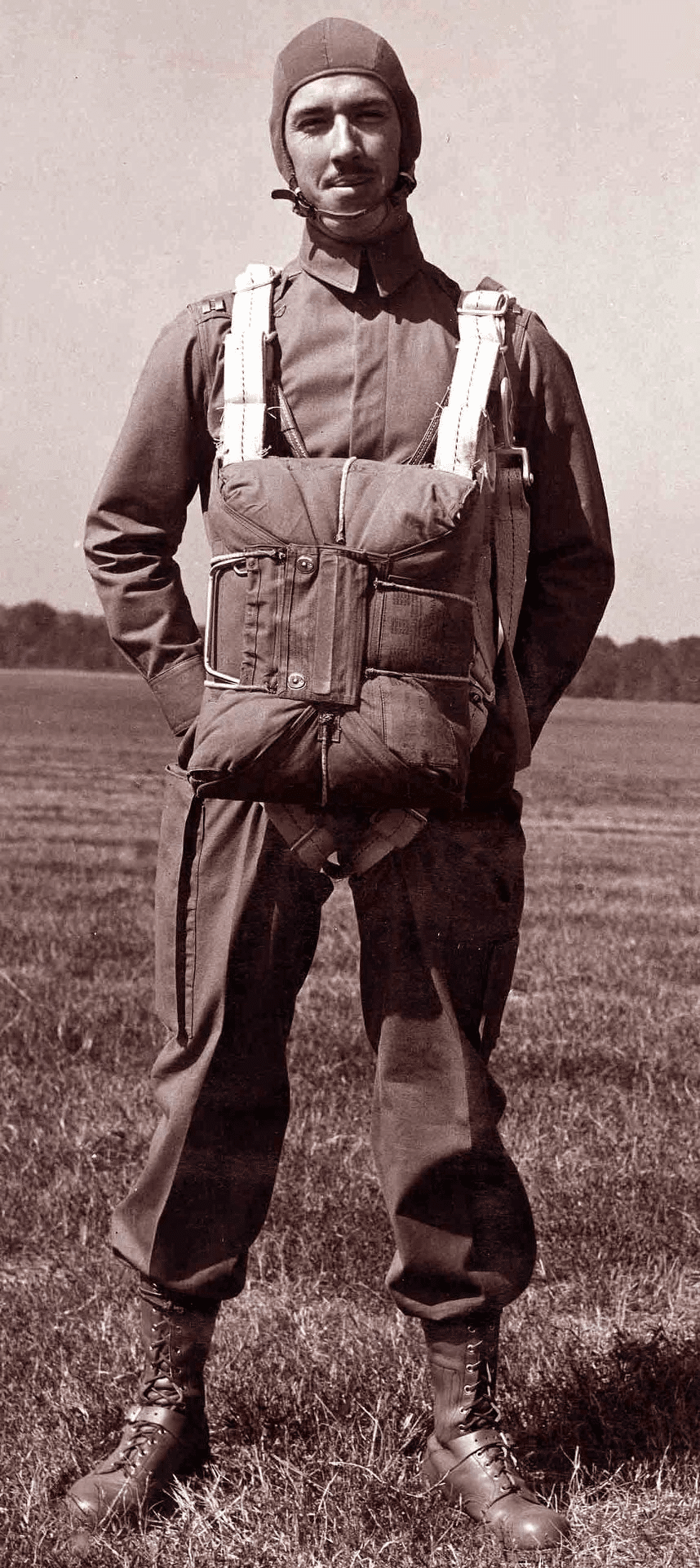The U.S. Army Parachute Test Platoon: Quiet Heroes of a Military Revolution

In the grand narrative of American military history, few units have left such a powerful legacy with so little public recognition as the US Army Parachute Test Platoon. Born in 1940 amidst rising global tensions, this elite 50-man unit ignited the spark that would become the backbone of the U.S. Army’s Airborne Forces. What began as a bold experiment quickly became a turning point in how wars would be fought—from the skies.
Global Tensions and the Drive for Innovation
Following World War I, military thinkers like General Billy Mitchell floated the then-radical idea of soldiers parachuting directly into battle. Though the concept met resistance in the United States, countries like Germany and the Soviet Union embraced it. By 1940, German paratroopers were changing the course of battles across Europe, capturing vital objectives with swift, shocking precision.
The United States found itself playing catch-up. Alarmed by Axis success and eager to modernize, Army Chief of Staff General George C. Marshall greenlit the formation of an experimental parachute infantry unit in April 1940. Thus began the US Army Test Platoon: America’s first true step into airborne warfare.
Birth of the US Army Test Platoon
On June 26, 1940, the Test Platoon was activated at Fort Benning, Georgia. Forty-eight enlisted volunteers from the 29th Infantry Regiment were selected for their exceptional physical and mental toughness. Two officers led the platoon:
- 1st Lt. William T. Ryder, a West Point graduate and pioneering parachutist
- 2nd Lt. James A. Bassett, Ryder’s capable assistant and backup leader
Under the watchful eye of Platoon Sergeant Hobart B. “Hobey” Wade, the group transformed a dusty hangar near Lawson Army Airfield into a living, training, and operational space. With no manual, no precedent, and no guarantee of success, these men had a singular mission: prove that American soldiers could jump into combat from airplanes and survive.
Pioneering Legends: Ryder and King
Lt. William T. Ryder
Nicknamed the “first American paratrooper,” Ryder immersed himself in the study of foreign airborne tactics and went on to design the now-famous 34-foot training towers. These towers would help future paratroopers conquer their fear of jumping. On August 16, 1940, Ryder etched his name in history as the first U.S. Army officer to make an intentional parachute jump. He would eventually rise to the rank of Brigadier General.
Pvt. William N. “Red” King
On that same historic day, Pvt. King stepped into the spotlight—the first enlisted man to jump. When another soldier froze at the door, King stepped forward without hesitation. His bravery earned him a place in the elite 506th Parachute Infantry Regiment of the 101st Airborne Division, participating in D-Day and Operation Market Garden.
Building a Training Program from Scratch
With no formal guidance, the US Army Test Platoon created its own airborne doctrine. Training was grueling and relentless:
- Five-mile runs, daily drills, and strict discipline
- Parachute Landing Falls (PLFs) practiced from trucks and platforms
- Improvised gear: football helmets, aviator caps, and mechanic coveralls
- Mastery of the Type T-4 static-line parachute and reserve systems
Tower Training: From Fairground Curiosity to Military Staple
One of the Platoon’s most impactful innovations came at the suggestion of Lt. Col. William C. Lee—use the 250-foot parachute drop towers from the 1939 New York World’s Fair. These towers in Hightstown, New Jersey, became essential tools for training confidence and technique. Eventually, the Army moved three towers to Fort Benning, where they are still used today.
Ryder’s 34-foot towers served another vital role: simulating the aircraft door jump. Tower Week, now a key part of modern Airborne School, owes its roots directly to these early experiments.
Making History: The First Tactical Jumps
After six rigorous weeks of training, the Test Platoon prepared for their biggest challenge yet: live jumps.
On August 16, 1940, Ryder and his men boarded Douglas B-18A and C-33 aircraft and jumped over Fryar Drop Zone. Ryder went first, followed by King. Their jumps were flawless. Just 13 days later, the entire platoon executed a mass tactical jump before top military leaders, including Gen. Marshall and Secretary of War Henry Stimson.
The demonstration was a resounding success. The only hiccup? Private Leo Brown landed on a hangar roof—a story that’s still retold with a grin.
From Experiment to Elite Force
The performance of the US Army Test Platoon impressed leadership so deeply that it catalyzed the formation of the 501st Parachute Infantry Battalion: the first of many airborne infantry units. Soon followed:
- 502nd PIB (1941), led by Lt. Col. William Lee
- 503rd, 504th, and more—culminating in full Airborne Divisions
By 1942, the famed 82nd and 101st Airborne Divisions emerged, their DNA infused with the knowledge, grit, and innovations of the original platoon. Members of the Test Platoon became instructors of the instructors, passing on what they had learned in the field.
Their influence would carry through to:
- Operation Torch (1942)
- D-Day Landings (1944)
- Operation Market Garden (1944)
- Operation Varsity (1945)
In 1945, the War Department formally recognized their pioneering role with a commendation.
Legacy That Lives On
Even today, the impact of the US Army Test Platoon resonates across every facet of U.S. airborne operations:
- Fort Benning remains the symbolic and operational Birthplace of the Airborne
- The five-jump requirement to earn airborne wings remains unchanged
- Three original training towers are still operational
- National Airborne Day, celebrated annually on August 16, honors the day Ryder and King made their historic jumps
And yes, paratroopers still shout “Geronimo!” as they leap: thanks to Pvt. Aubrey Eberhart, who yelled it in 1940 to show courage during a night jump.
The ethos of those first 50 sky soldiers lives on in today’s 82nd and 101st Airborne Divisions, the 75th Ranger Regiment, and even Special Forces units: each carrying the fearless DNA of the Test Platoon into modern combat.
National Airborne Day: Why the US Army Test Platoon Still Matters
The US Army Test Platoon wasn’t just a group of daredevils jumping out of planes. They were the cornerstone of a seismic shift in military strategy. Their courage, resourcefulness, and relentless spirit forged a combat doctrine that turned the skies into a battlefield—and paratroopers into legends.
On August 16th and every day, we remember them not only for their historic jumps but for proving that innovation, when paired with bravery, can change the world.

